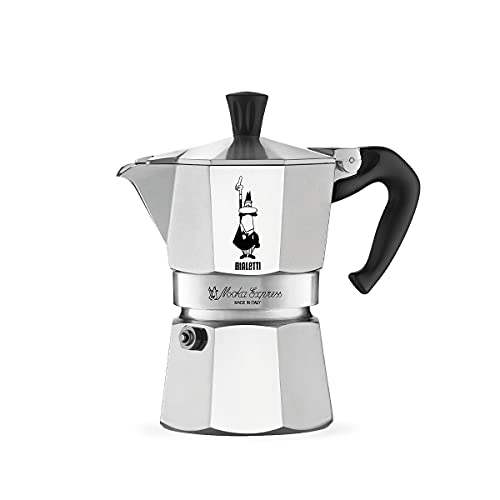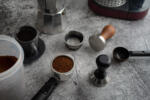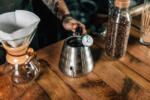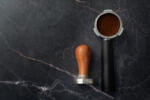Without coffee, the world would be stuck in a phase of unproductive, inefficient work ethic that organizations today hate so much.
Table Of Contents
−- How to make an Espresso
- What do you need?
- How to brew Espresso (A-Z):
- What to do when your espresso is bitter
- Espresso Brewing quick overview
- FAQs
- Do I need special espresso beans to make an espresso?
- What temperature should espresso be made?
- Does hotter water make stronger coffee?
- What is “Crema,” and is it harmful?
- Can I make Espresso without a machine?
- How do I tell if my espresso is ok?
- Is an Espresso machine all I need to get the perfect cup of espresso?
- Is Espresso good for my health?
- Why does my Espresso come out cold from the machine?
- My espresso machine seems to be leaking. What is wrong with it?
- How to measure the espresso water temperature?
- How much coffee do I need for an espresso (coffee to water ratio)
- How many grams of coffee are there in an espresso?
- How to make Espresso without the Espresso Machine
In this blog post, we’ll walk you through the steps of how to brew an espresso like a barista. So grab your favorite mug and get ready for some caffeinated goodness!

We wanted to house how to make an espresso with a machine and make one using other methods like the French Press or AeroPress. You’ll find either in this guide. If you want to skip to the one you want to learn, use our table of content to guide you.
How to make an Espresso
An Espresso is a relatively strong coffee made using high-pressure water with finely ground coffee granules. But making a perfect cup of Espresso is as much hard work as anything else. So before creating the perfect cup, you should understand how it works.
You’re supposed to drink an espresso in a small shot glass unless you’re a quad espresso person.
These espresso shots are either independently consumed or mixed with another drink. The brewing process of an Espresso sets it apart from all other types of coffee.
Learning how to make an espresso shot may be one of the most important things you learn, whether you’re a barista or make your espresso at home.
What do you need?
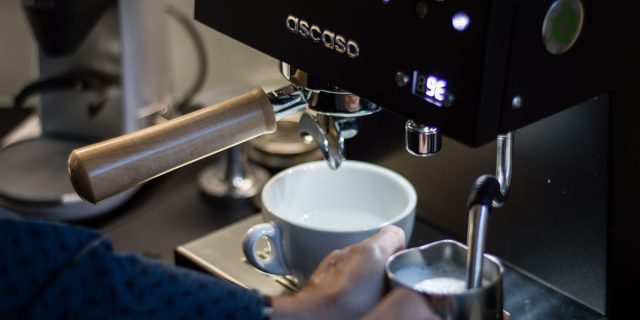
The “high-pressure water” part of espresso-making requires a machine. Buying this machine is a difficult task. A great Espresso machine must have a double boiler to maintain constant water temperature and provide consistently and not necessarily “high” pressure.
But you will also need to pick a grinder for your espresso. You must choose a specially designed grinder for minute adjustments to the ground coffee. You will need more things before you can brew your perfect mug of Espresso: a portafilter, a dump box, and a tamper.
How to brew Espresso (A-Z):
Having detailed the equipment for espresso, it must also be highlighted that making espresso is more about creating the perfect espresso shot than a liquid beverage itself. Here is how you go about it:
Picking Coffee
Unlike what most people believe, your espresso brewing does not begin from the machine. Instead, your espresso brewing begins when you decide to buy your favorite coffee and go to the store to get it. Only when you get the best coffee can you guarantee the perfect cup for yourself.
Knowing which beans to choose and how to prepare them will make a huge difference in terms of flavor and consistency.
Start by selecting high-quality coffee beans that are specifically designed for espresso. The blend should be dark roasted and contain a combination of Arabica and Robusta beans. Dark roast coffee beans have a strong and intense flavor, while Arabica beans provide sweetness and balance. Robusta adds body and creaminess to the cup.
Here’s our:
Grinding
To brew in an espresso machine, you must have your coffee grounds. However, the coffee grounds for espresso are somewhat tricky. Espresso requires your coffee grounds to be fine enough to blend in the water within the short time that it is exposed to water but not too fine that they dissolve too much and make the coffee bitter.
But how do you grind your coffee? You are mistaken if you think you can grind your coffee with the same blade cutter used in your kitchen to chop fruits and vegetables. A blade cuts through the coffee rather than grinding it.
Furthermore, using a blade to turn the beans into a powder means that your grinds will be inconsistent and overheated. This causes the color of the coffee to change and the flavor to fade.
So, the right tool to grind your coffee is to use burr grinder. These grinders not only allow for perfect consistency but also allow several different consistencies. Furthermore, with a burr grinder, your coffee is not overheated and does not lose its flavor. Using burr grinders is transformative for your coffee experience.
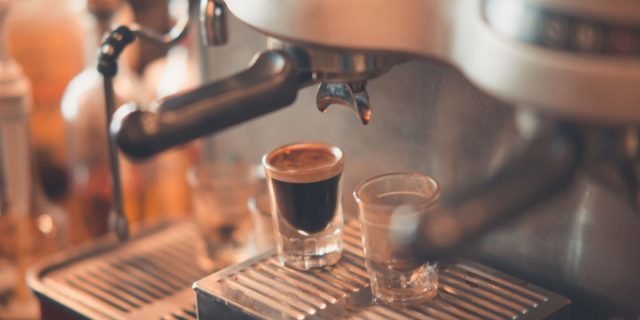
Coffee Preparation
- The cup
It is important to warm the cup before using it. Rinse it with hot water so that the porcelain or glass does not cool the beverage when it hits it.
- Portafilter
The next step is to remove the portafilter from the machine and clean it. All equipment must be as clean as possible and dry. Remember, the old coffee residue can affect the flavor of the fresh espresso you’re creating. Also, a wet basket will interfere with extraction, making the coffee sticky.
Fill your portafilter halfway with ground coffee. Take note of the grind size and the dosage to avoid over or under-extracting your shot. (Remember: under-extracted coffee tastes acidic, while over-extracted coffee tastes bitter.) Verifying the dose is simple if you have a calibrated on-demand grinder. If not, a scale should be used.
- Scaling
Now place the portafilter on the scale and set the scale to zero with the portafilter on it. That way, you can measure how much coffee you add to it.
- Adding coffee grounds
Add about 19.5 grams of coffee (arbitrary, you can choose what ratio you want) to the portafilter for a double slot. Once the coffee is added to the portafilter, use your clean fingers to level the coffee in the filter. Use light motions on the top of the filter, ensuring you do not apply too much pressure.
- Distributing the grounds
Next, place the filter on a flat surface and your tamper on the ground. Then apply light pressure downwards on the ground, but ensure you do not add too much pressure. Do not put excessive stress on your wrist.
Tap the portafilter handle gently on the tamp mat to spread the ground coffee evenly, or use a distribution tool if you have one. This is a critical move because it ensures no air pockets in the coffee. Because of air pockets, water can channel, i.e., take complex routes through the ground coffee rather than spread uniformly. As a result, certain grounds will extract more than others.
- Tamp and clean
Again, the aim is to eliminate air pockets and ensure that the coffee is perfectly level. Take your tamper and press it into the ground coffee, tamp straight, and apply enough pressure.
Pressure is important because it guarantees that the coffee is correctly squeezed and the puck keeps its form. (However, contrary to popular opinion, 30 pounds of pressure is probably not required.) A straight tamp, on the other hand, will guarantee that the coffee is uniformly spread. As a consequence, channeling and uneven extraction may be avoided.
Finally, polish the surface of the ground coffee with the tamper. Place the tamper on top of the puck and spin it. This will smooth out tiny ridges, ensuring the coffee’s surface is smooth and flat.
Make sure to clean any excess dry coffee from your portafilter’s top, ears, and spouts of your portafilter to avoid any grounds going into your cup.
Group head preparation
The next step is heating the group head. You do this by running hot water through it to ensure it is hot and then locking the portafilter with the coffee back into its place. However, once you have heated your portafilter, you must be swift with the next steps. If you do not, the head might burn the coffee in the portafilter. This burnt coffee leads to extremely unpleasant bitter notes of coffee in your cup.

The Brew
After ensuring the portafilter is securely attached, start brewing and set the timer. Next, place a cup under the portafilter and let it fill. This will barely take any time, and you will have your shot of espresso to use with any beverage you want to try with.
But you should know when to stop this process. This is when after starting slow and developing into a stream of coffee, the coffee starts to turn yellow. The yellowness is your cue to stop the process immediately.
But even if the process seems relatively simple with just these three steps, it will take a while for you to get used to it. So, you must not give up if you do not get the right taste the first few times.
The Ratio
The real determining factor in the type of espresso you get and your preference depends on the ratio of beverage to coffee. There are several predetermined ratios for different coffees, but the perfect ratio is always subjective. If you try a high ratio, you might find that the potency of your coffee rises heavily, but so will the bitterness.
On the other hand, a lower ratio will ensure that you get the most flavor out of your coffee but will lower the potency. Experiment enough, and you can find your perfect ratio soon enough.
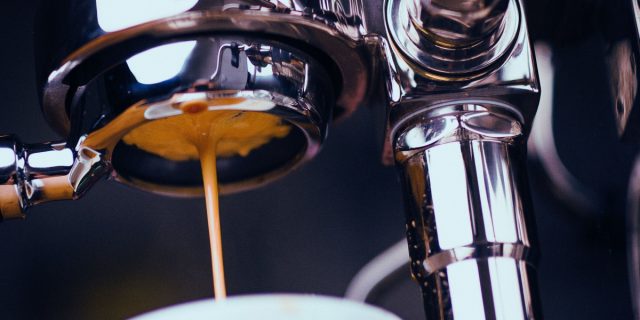
The temperature
The ideal temperature for espresso extraction is between 90 and 96 degrees Celsius (195/205 degrees Fahrenheit). A higher brew temperature results in higher extraction yields (and burnt coffee if you use boiling water), while a lower brew temperature results in less coffee extracted at a slower rate.
Many low-end machines do not allow you to change the brew temperature, but you can calibrate it if yours does. The procedure varies depending on the brand and whether you have a single or dual-boiler espresso machine or a heat exchange machine, so make sure you obey their instructions.
Taste your espresso to see if it’s under-extracted (sour and thin), over-extracted (bitter and burnt), or perfectly extracted (excellent!). If it’s one of the first two, you have an excuse to drink a few more espresso shots.
Try again after adjusting the temperature slightly. Regarding coffee grounds and doses, we recommend sticking to the original formula and experimenting with variations within those guidelines before finding the best flavor for your tastebuds.
The Cleaning
However, if you think your coffee job has ended, think again. You have a cup of coffee in your hand that, when finished, will require cleaning. But that is not all. Once you are done, your coffee machine will also need to be cleaned.
In doing so, take special care of the residue that accumulates, especially in the basket. If not, the puck might not just become difficult to clean later on but can also lead to unhealthy bacteria developing.
A new taste every time!
People tend to believe that trying enough will lead them to such expertise that they could make the perfect cup of espresso every time they try their hand. However, that is only true when you monitor everything so precisely that you can create a science. People that can do that are usually huge chains of coffee shops such as Espresso.
Of course, having a uniform taste every time you drink has its charm, but if you are not a corporate entity, why not enjoy a unique taste every time? This is to say that every time you make your espresso, the flavor will be different, and that is not necessarily a bad thing. The idea behind making your espresso is that you get a new taste every time you try.
As you keep brewing, you will soon come to make a relatively stable taste every time you try without much variance. So, even with a unique taste every time, you get a sense of uniformity in your espresso with time.
What to do when your espresso is bitter
When people make their espresso, they find it bitter and undrinkable. This is not just the case at home but also in coffee shops around the country. However, just because you have an espresso machine or know your hacks around the need for machines does not mean you can make the perfect espresso, so don’t despair!
Many people cannot figure out what it is with their Espresso brewing that makes their espresso bitter. Well, the real answer lies in the very basics of making Espresso. In essence, the very first idea in making sure that your espresso is not bitter:
- Get good quality coffee beans and use the right amount. The right amount is just 6 to 8 grams of freshly ground coffee.
- Another primary factor is water temperature. The right temperature for your water for espresso is between 190- and 200 degrees Fahrenheit.
- You can also work on the grind of your coffee beans to make your espresso less bitter. Again, use a medium grind to ensure that all the proper extraction is received with this grind. Do not try too much at once; you will be good to go with your espresso.
Espresso Brewing quick overview
Brewing the perfect espresso requires a mastery of many techniques and tools. The most important factors that affect the extraction rate and quality are: brew temperature, exposure time (brew time), amount of coffee (dose), grind size, and tamping.
A good starting point is to use a brew ratio of 1:2 of ground coffee to liquid espresso with a 17g dose, which should yield 34g of luscious espresso. As the grinder heats up, it can increase the extraction yield and make the grounds more soluble. Lowering the brew temperature can also help produce better results.
Knowing how espresso machines work is key to making great coffee as their major difference from other brewing methods is their effect on flow rate. In conclusion, controlling water temperature plays an integral role in achieving perfect espresso as higher temperatures lead to slower flow rates thus affecting extraction yields. By mastering all these techniques and tools baristas can produce exquisite espressos for customers everywhere!
FAQs
Do I need special espresso beans to make an espresso?
No, of course, you do not. An espresso is not about a different bean but how you brew it. It passes water through highly pressurized coffee granules.
What temperature should espresso be made?
Espresso should be brewed at a temperature of 90-96°C (195-205°F). Since water temperature influences extraction yields (the number of elements extracted from the coffee), brewing espresso at a higher temperature produces a more bitter coffee, while brewing espresso at a lower temperature produces a more sour coffee. You don’t want the water to exceed its boiling point (100°C/205°F), as this would result in a bitter, burnt cup of coffee.
Does hotter water make stronger coffee?
Yes, hotter water makes better coffee because it improves extraction yields, which means that a greater percentage of the elements in the coffee is removed. Brewing coffee at higher temperatures, on the other hand, compromises the final product’s flavor, resulting in a bitter and possibly burnt taste. If you want a better coffee, add more grounds rather than increasing the water temperature.
What is “Crema,” and is it harmful?
Most people do not realize that “crema” is the name given to that light-colored liquid on top of your espresso. It is not harmful and is created in the course of making Espresso.
Can I make Espresso without a machine?
Well, the answer to this question is a yes. You can use several ways to get your cup of espresso, even if you do not own an espresso machine. However, the real answer is, why would you want to? The struggle to make espresso without a machine and the resulting taste of espresso are not worth it. So, if you do make your espresso without a machine, do not have your hopes high for a great cup.
How do I tell if my espresso is ok?
Instead of relying on the drink’s taste, you can also use its color and aroma to decide whether it is made perfectly or not. For example, golden red color with a strong fragrance is what defines excellent Espresso.
Is an Espresso machine all I need to get the perfect cup of espresso?
Unfortunately, the perfect cup of espresso is not as easy to be attained with just a single machine. To ensure impeccable quality, you need more than just an espresso machine. This includes great coffee beans in airtight containers and an excellent burr grinder to get you the perfect grind for your espresso, spoons, and flavored syrups.
Is Espresso good for my health?
Yes! People often tend to ignore that Espresso carries several health benefits. These include long-term memory improvements, heart health improvement, and weight loss.
Why does my Espresso come out cold from the machine?
If your machine does not give you a warm espresso, you can try to tamp the espresso grounds more firmly or try to pre-warm the cup. However, in most cases, this happens when the espresso machine is not as clean as it should be. This, again, emphasizes the need to make sure that you clean your machine every time you use it.
My espresso machine seems to be leaking. What is wrong with it?
Most espresso machines come with a drip tray at the bottom. This is much like the drip tray that is available in refrigerators. When this drip tray is filled, it begins to leak out. Keep checking the drip tray and emptying it every once in a while.
How to measure the espresso water temperature?
The yield percentage is calculated by multiplying the weight of the brewed coffee by the TDS percentage (total dissolved solids) and dividing the result by the grams of coffee grounds (e.g., 36g x 10% TDS / 18g = 20%).
How much coffee do I need for an espresso (coffee to water ratio)
The suggested ratios are 1:3 (e.g., 8g:16g) and 1:2 (e.g., 8g:16g) (e.g. 8g:24g). Anything less than 1:2 is a “ristretto”, whereas anything between 1:3 and 1:4 is a “lungo”. Anything higher would produce something more like an Americano.
How many grams of coffee are there in an espresso?
A good single espresso is made with 7-9g of ground coffee
How to make Espresso without the Espresso Machine
Although it seems that the entire work in this process is being done by machinery, learning to make espresso without a machine is also essential. These are easy hacks for the machine and, of course, do not guarantee a perfect remake of the Espresso machine.
How does this work? You can use different methods, such as a French Press, a Moka Pot, or an AeroPress, to make your Espresso. How?
Here is how:
1. French Press

Most people tend to avoid making their espressos with a French Press. This is because a French press is said to provide inadequate pressure to the coffee to make it perfect for making espresso. But still, here is how it is done:
- You open up your bag of coffee and add two tablespoons of it to your French Press for every cup (4 tablespoons for 2 cups). Of course, the better you measure your coffee, the better your results will be. But since we are using a hack to make Espresso, we will not pay as much attention to precision.
- Again, we are not relying on exact measurements; If you want to measure, heat it to about 185-205 degrees.
- This is where you understand what a blessing an espresso machine is. You pour just a little water into your French Press and start stirring. After stirring for a few seconds, add the rest of the water and stir.
- Then, add the lid and press down with the plunger on the coffee. If you face a problem, lift the plunger and force it down on the coffee again, and you will have your latte after a few tries at this.
2. Moka Pot
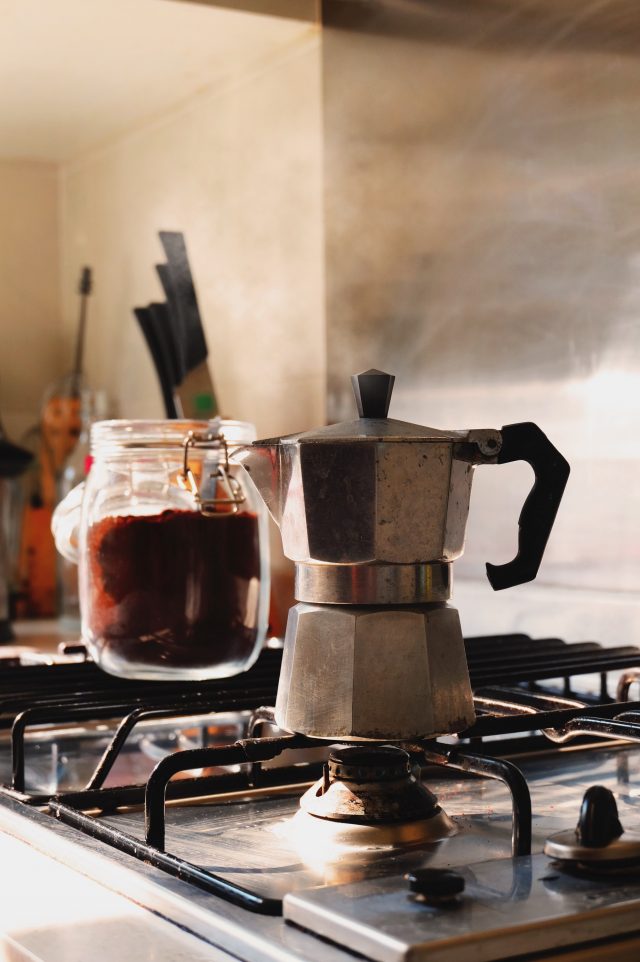
The Moka Pot is somewhat of a machine to make Espresso but relies on more manual effort than automatic. Follow these steps to make your espresso using a Moka Pot:
- Take your bottom chamber and fill it up with water. Of course, by this, we mean you should fill it up to the notch, after which the water will fall out automatically.
- Add the coffee grinds to the tube and basket. Since these are relatively bigger than a machine’s portafilter, it will be a little messier than a portafilter. But no harm in actually measuring.
- Go ahead and put this tube and basket inside the bottom chamber where you filled the water. Then, assemble the Moka Pot entirely and place it on the stove for heating on high heat.
- Keep heating it until you hear bubbling sounds. Once you do and you stop, you will open the Moka Pot to find your Espresso ready in your top chamber.
3. AeroPress

Our beloved AeroPress machine, it seems, never disappoints.
The AeroPress is the easiest to make your espresso without an Espresso machine. This is because you do not need to put it on heat or do anything complicated to prepare the coffee grounds.
Here is how this works:
- Heat your water too hot. Again, if you were measuring, I would say heat it up to around 185-205 degrees.
- Then you set up your AeroPress ready for function. You add your filter to your drain cap and then add it to the AeroPress. Set it up correctly to make it easier to exert pressure.
- Once set up, add the espresso granules to the AeroPress. But wait, no pressure yet. After adding the ground coffee, mix your hot water with a spoon before letting it sit for around 40 seconds.
- Now comes the part where you add the pressure. Push down on the plunger to pour all the coffee into the kettle, and the AeroPress is empty. Congratulations, you just made your Espresso with AeroPress.
Disclaimer: This post contains affiliate links, which means I may receive a small commission, at no extra cost to you, if you make a purchase using these links. Remember to support us by purchasing through the Amazon/Walmart/Impact Radius links provided. Last update on 2024-04-19 / Affiliate links / Images from Amazon Product Advertising API
Disclosure: No compensation or free products were received in exchange for writing this review.

Editorial Staff
The editorial staff at Crazy Coffee Crave is a team of coffee enthusiasts & Baristas who enjoy the one thing we all think about as soon as we get up in the morning. Trusted by thousands of readers worldwide.


